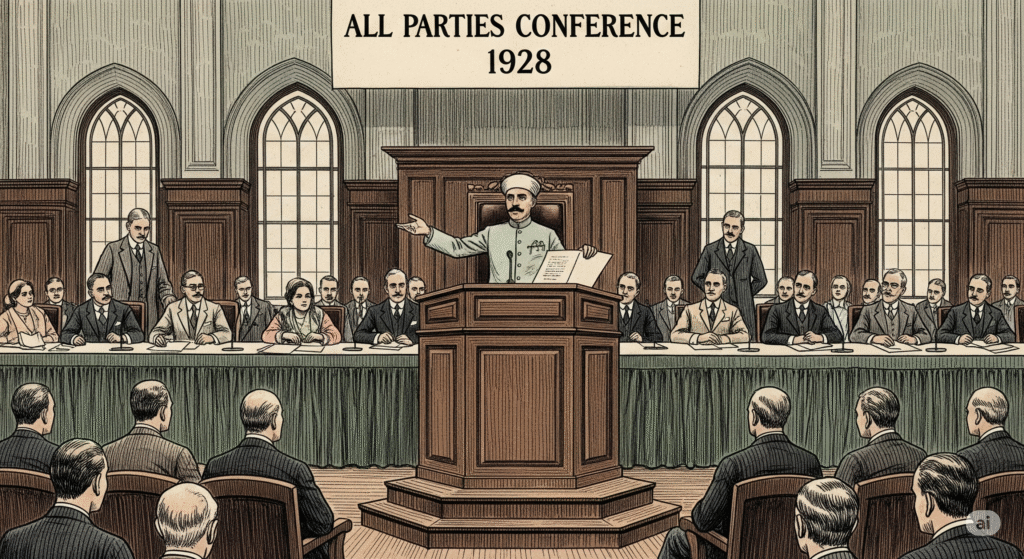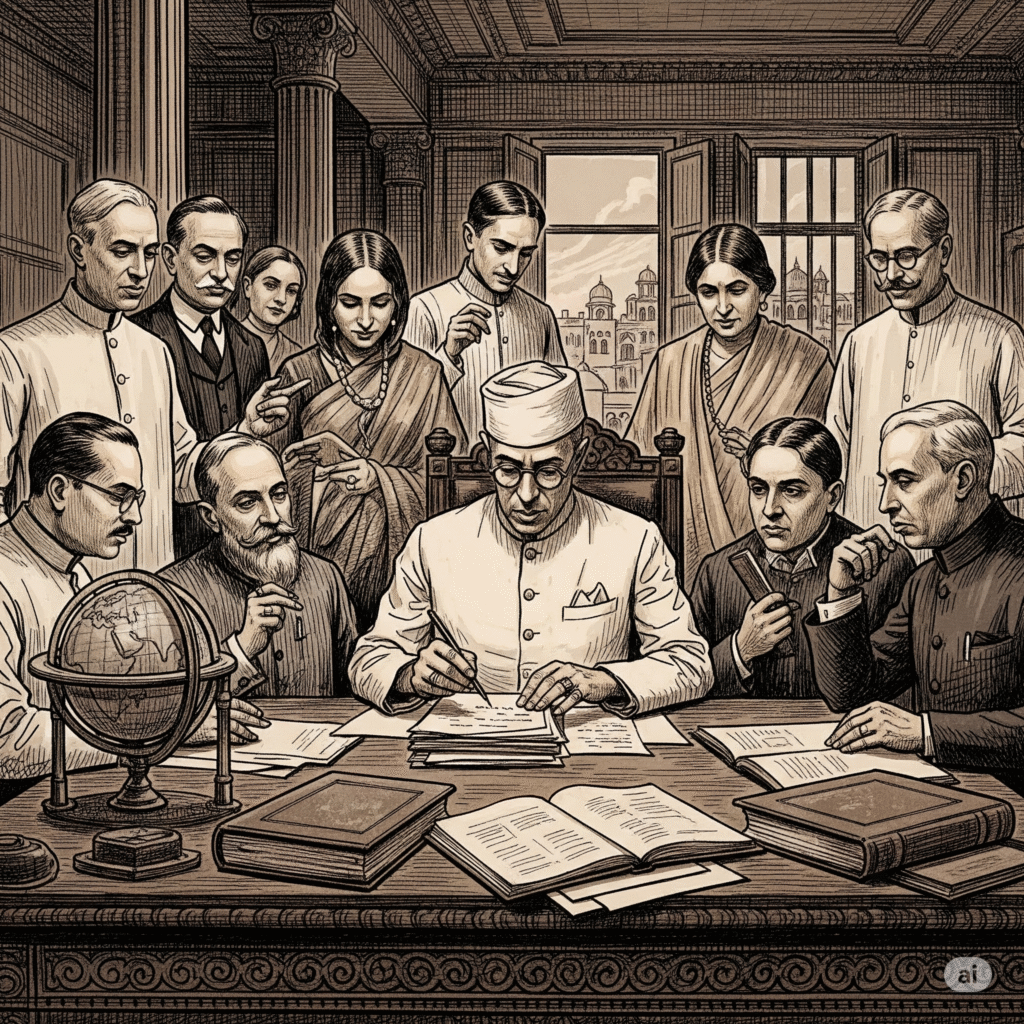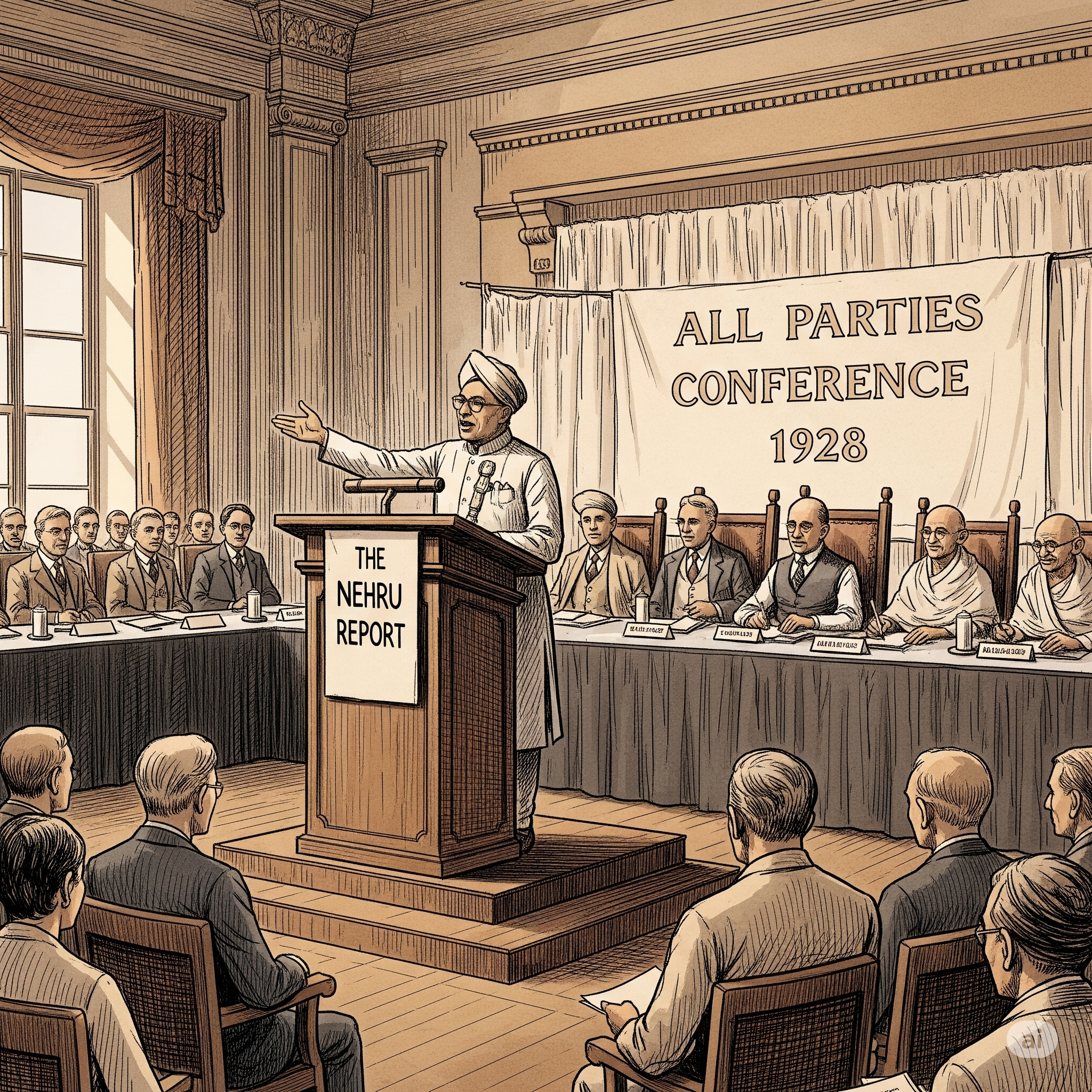The Nehru Report was a constitutional framework forged by the All Parties Conference with Motilal Nehru, father of Jawahar Lal Nehru, as their chairman, against the Simon Commission. It was presented in 1928. It all started with the Government of India Act 1919, also known as the Montagu-Chelmsford Reforms, through which the British Government had started incorporating Indians in the administrative designations. It was decided that after a decade, a new commission will be set up to keep track of the impacts and progress of the Montagu Reforms so that through its examination, they could set up further constitutional reforms. But, after a decade, all seven participating members were British, and not even a single Indian was involved. The new commission was introduced in 1928 and named the Simon Commission. Enraged by this, most of the Indian politicians came together and refused to accept the commission. Later, the secretary of state of India, Lord Birkenhead, resolved that Indians can make their own draft of the constitution and present it to everyone, and hence the Nehru Report was made and presented in 1928.

Nehru Report recommendations
The Nehru Report came with several recommendations, which include –
- Dominion Status.
- 19 fundamental rights, including the right to vote for men and women above 21 years of age, unless disqualified.
- Equal rights for men and women as citizens.
- No state religion.
- No separate electorates for any community but supported reservation of minority seats.
- Linguistic basis for creation of provinces
- Proposed the creation of the Supreme Court
Don’t miss – Who is the first woman governor of India?Governor of Maharashtra 2025
Nehru Report and Jinnah’s 14 points
Jinnah, after consulting the Muslim leader, put forth the 14 points, which were as follows:
- Federal Constitution with residual powers with the provinces.
- Provincial Autonomy
- No constitutional amendment without the agreement of the states.
- All legislatures and elected bodies to have adequate Muslim representation without reducing the Muslim majority in a province to a minority or equality.
- Adequate Muslim representation of Muslims in the services and in self-governing bodies.
- ⅓ representation of Muslims in the Central Legislature.
- ⅓ Muslim members in the Central and the State cabinet.
- Separate electorates
- No bills to be passed in the legislature if ¾ of the minority community considers it against its interests.
- Any reorganisation of territories not to affect the Muslim majority in Bengal, Punjab and the NWFP
- Separation of Sindh from the Bombay presidency
- Constitutional reforms in the NWFP and Baluchistan
- Full religious freedom for all communities
- Protection of the religious, cultural, educational and language rights of Muslims.
Why the Nehru Report was rejected
The Nehru Report was rejected by Jinnah because the All Parties Conference rejected the alterations proposed by Jinnah. Jinnah then called for an All Parties Muslims Conference in Delhi, where he proposed the fourteen points to safeguard the rights of Muslims after the independence of India.
Nehru Report date
The Nehru Report Date was a draft of the constitution prepared by the All Parties Conference in retaliation to the Simon Commission. It was presented at the All Parties Conference held in Lucknow in August 1928.
Nehru Report UPSC
The Nehru Report is a significant topic of UPSC examinations. It serves as a framework for our present constitution. Many questions have been asked about this subject in the UPSC Examinations.
Nehru Report short note
The Nehru Report was a constitutional framework forged by the All Parties Conference with Motilal Nehru, father of Jawahar Lal Nehru, and their chairman, against the Simon Commission. I was presented in the year 1928. It all started with the Government of India Act 1919, also known as the Montagu-Chelmsford Reforms, through which the British Government had started incorporating Indians in the administrative designations.

It was decided that after a decade, a new commission will be set up to keep track of the impacts and progress of the Montagu Reforms so that through its examination, they could set up further constitutional reforms. But, after a decade, all seven participating members were British, and not even a single Indian was involved. The new commission was introduced in 1928 and named the Simon Commission. Enraged by this, most of the Indian politicians came together and refused to accept the commission. Later, the secretary of state of India, Lord Birkenhead, resolved that Indians can make their own draft of the constitution and present it to everyone, and hence the Nehru Report was made and presented in 1928.
Nehru Report members
The Nehru Report was a constitutional draft made by the All Parties Conference in opposition to the Simon Commission. Chairman of the committee was Motilal Nehru, with Jawaharlal Nehru as the secretary. Other members were Ali Imam, Tej Bahadur Sarpu, Subhash Chandra Bose, Shuaib Qureshi, Mangal Singh, M.S. Aney and G.R. Pradhan.
Which objective was outlined in the Nehru Report?
The Nehru Report came with several objectives, which include –
- Dominion Status
- 19 fundamental rights, including the right to vote for men and women above 21 years of age, unless disqualified.
- Equal rights for men and women as citizens.
- No state religion.
- No separate electorates for any community but supported reservation of minority seats.
- Linguistic basis for creation of provinces
- Proposed the creation of the Supreme Court
Also read – PAN card download, How to apply pan card online
